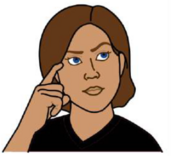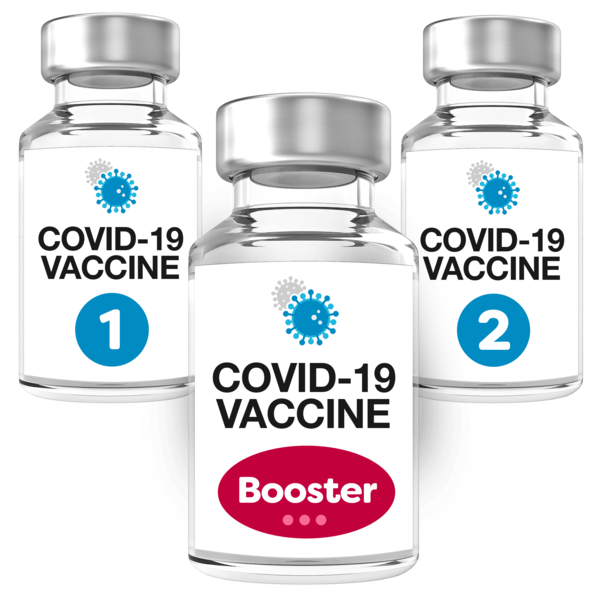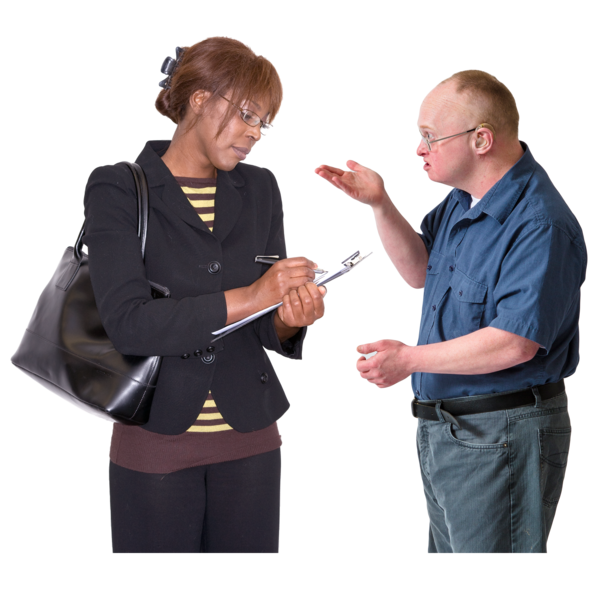Information about the cervical screening test
Information about the cervical screening test
A cervical screening test is a medical test on part of the body called the cervix.
It is often called a smear test.
This Easy Read tells you...
- About the cervical screening test.

- Why cervical screening tests are important.
- When you will get the cervical screening test.
- What happens at the cervical screening test.
- What happens after the cervical screening test.
- What to do if you feel worried about the cervical screening test or if you have any questions.
About the cervical screening test
The cervical screening test is often called a smear test.
It is a test that a doctor or nurse does on a part of your body called the cervix.
Women and some other people have a cervix.
The cervix is inside your body near your vagina if you have one.
It looks a bit like a donut.
The cervical screening test checks that part of your body to make sure it is healthy.
It can help stop a type of cancer called cervical cancer.
People aged 25 -64 can get the cervical screening test.
The test is safe to have.
Everyone with a cervix should be asked to have a cervical screening test.
That also includes:
- Women who have only had sex with women.
- People who have never had sex.
- People who have had a
vaccine
 A vaccine is medicine that helps your body to fight an infection in the future.
called an HPV vaccine.
A vaccine is medicine that helps your body to fight an infection in the future.
called an HPV vaccine. - Some people who have had another cancer near that part of the body like vaginal, ovarian or vulval cancer.
Why cervical screening tests are important
The cervical screening test can check for any changes in your cervix.
Sometimes changes in the cervix can lead to a cancer called cervical cancer.

The cervical screening test does not tell you if you have cervical cancer.
But it tells you about any changes that could leave to cervical cancer.
When you will get the cervical screening test
When you are 25 years old you should get a letter about your first cervical screening test.
The letter will be from your doctor.
You can then book the test with your doctor.
Until you are 50 years old you will be asked to come for a cervical screening test every 3 - 5 years.
From 50 years old to 64 years old you will be asked to come for a cervical screening test every 5 years.
You might be asked to come for more cervical screening tests.
For example, if the doctor thinks you have more chance of getting cervical cancer.
You can still ask for cervical screening tests when you are older than 65 if you want them.
If you don't get a letter about your cervical screening test
You can call your doctor if you think you should get a letter.
Some people might not get a letter about the cervical screening test.
For example, if you have told the doctor you are male you might not get a letter.
What happens at the cervical screening test
The doctor or nurse will put a small tool into your vagina that will help them to see the cervix.
Then the doctor or nurse will take some cells from your cervix.
Cells are very small things that live in your body. You have lots of them.
The doctor or nurse will use a soft brush to take the cells from your cervix.
You might feel something when the cervical screening test happens.
It might feel a bit strange or uncomfortable but is should not be painful.
What happens after the cervical screening test
The doctor or nurse will send the cells they got from your cervix to be tested.
The test will see if you have a virus called Human Papilloma Virus or HPV virus for short.
This is a virus that can sometimes cause cervical cancer.
See the Easy Read about HPV virus for more information.
If you have the virus
The test will check if the cells in your cervix could cause cancer in the future.
What to do if you feel worried about the cervical screening test or if you have any questions
- If you are worried about anything you can speak to your doctor or nurse before the test.
You can ask your doctor or nurse any questions you want to about the test.
The doctor or nurse can help you.
For example, they can sometimes change the cervical screening test a bit if you are worried it might hurt.
They can often use a smaller tool to do the cervical screening test.
They can also put lots of liquid on the tool to make it easier to put in your body.
2. Tell the doctor or nurse anything that you need to feel OK for the cervical screening test.
For example, if you are a man and you want the doctor or nurse to call you he, not she.
3. Try to relax at your cervical screening test.
Think about what helps you to relax.
You can also take deep breaths to help you relax.
Or you can take other things like music to listen to, or someone to support you.
4. You can ask the doctor or nurse to stop anytime during the cervical screening test.
You don't have to have the cervical screening test at that time if it is too hard for you.
You can have the cervical screening test at another time.
Or you can sometimes go to another place to have your cervical screening test.
For example, another health place where they have more things to make the cervical screening test easier.
5. You don't have to have a cervical screening test at the first appointment.
You might need more than one appointment to feel OK about having a cervical screening test.
You might want to meet the doctor or nurse first to talk about the test.
Or you might want to see what the doctor or nuse uses to do the test.
6. You might choose not to have a cervical screening test at all if you find it very hard.
Speak to your doctor or nurse first.
They can talk to you about any risks if you don't have the test, or any other choices you have.
If you have any other questions
You can also get information about the cervical screening test from the charity The Eve Appeal's free and private
service
 A service gives people what they need, like healthcare services that help people when they are ill, and support services that give people support.
called Ask Eve.
A service gives people what they need, like healthcare services that help people when they are ill, and support services that give people support.
called Ask Eve.
Phone Ask Eve free on: 0808 802 0019.
Email Ask Eve at: nurse@eveappeal.org.uk



